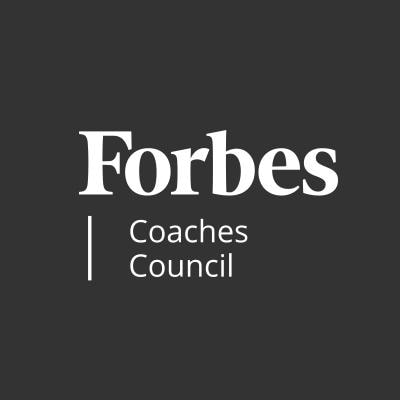|
Developing a Strategy at the Entrepreneurial Stage (Part 1 of 3) Step 1: ASSESS In some ways a continuous improvement strategy deployed on an entrepreneurial firm is about as oxymoronic as it can get! And yet… The Oxymoron Problem: The entrepreneurial firm that is ready to make a step toward stable processes and consistent delivery of value to its customers is poised to become even more successful. Yet, a critical factor to keep in mind is that most quality nerds (you know the people you think you need to hire to enact a continuous improvement strategy) are actually the last people who should do so. Your entrepreneurial edge is undoubtedly based in the innovation and forward thinking that launched your products in the first place. Traditional quality management and hence continuous improvement is more akin to hardening of the arteries than it is increasing organizational strength. We need to protect your innovative core while stabilizing your customer focused processes. Strategic Thinking What are the processes in your business that are absolutely customer facing? There are several: Sales, Customer Service, Accounts Receivable, Shipping & Fulfillment, possibly even final manufacturing. How are they performing currently? Excellent, above average, mediocre, below average, worse? Any process not rating an “above average” score as measured by your customer must become a priority improvement target. How will you know? The best way is to ask your customer. If this isn’t easily available then review your customer complaints, rejects, claims, online reviews, and customer facing employee comments. Prioritize the list. Think about triage, our goal is to stop the bleeding and stabilize the patient. You may be thinking by business isn’t in mortal danger what’s with the medical metaphor?! Simple, any one of the processes above that is mediocre or worse is an invitation for your competitor to steal away your client base and then where are you? No customer no business. How effective is your problem solving? Another critical area to examine relates to actions taken when a customer problem is received. Do you throw people and money at the problem and spare no expense to take care of the concern? Do your employees and leaders actually know how to solve problems beyond putting on band-aids. Chances are high that they do not and this has a serious consequence, problems that happen over and over again. Leaders are the change agents that either help a strategy succeed or cause it to wither and fail.
How effective is your leadership? This is a tough one. Every leader I meet acts as if they are in the top 20% when it comes to leadership skill. This obviously is false for 80% of them. The problem is confounded by another factor. John Maxwell a prolific author on leadership, has an excellent rule when it comes to leadership called the law of the lid. Essentially of leaders are rated on a 1-10 scale with ten being excellent, we tend to hire leaders for our teams that are at best equal to our leadership ability and generally worse. What is the implication? The deeper you go the weaker the leaders. I will add to this that leaders who rate less than seven rarely are thinking about leadership development of their direct reports. Again leading to weaker leadership. Why is leadership important to this conversation? Simple, leaders are the change agents that either help a strategy succeed or cause it to wither and fail. I ask again how effective is your leadership? Once you've done the assessment, advance to Step #2 PLAN. If you' re ready to begin building your continuous improvement strategy, we're here to help. Schedule your complementary STRATEGY SESSION and together we will design a plan that fits your unique business.
If you are reading this, you are likely an executive trying to gain the insight necessary to define and implement a strategy for your business. A strategy which will assist you in controlling cost, improving quality, engaging your employees and/or growing revenue. There is so much information available and much of it is self-serving and in many cases contradictory. How do you decide what information to consider? What to reject? I recommend finding a trusted source who knows the context and application of the challenge you face. Someone who can answer your questions and give you wise advice that fits your unique business culture. As a Lean 6 Sigma Master Black Belt and developmental Psychologist with thirty plus years of operational leadership experience, I am going to attempt to provide a framework for you to gain the very insight you need when considering a continuous improvement strategy. To that end, this article is designed as a conversational look at the typical questions you need answered. If I miss any I invite you to connect with me. Post in the comments and I will take them on.  Where do I start to develop a continuous improvement strategy? Developing a strategy for continuous improvement is an important aspiration. However, I urge you to first consider the advice that Joseph Juran, a founding father of the quality movement, would make if he were here. Quality improvement cannot be successfully completed on a |
| |
A process must consistently deliver quality products and services to the customer. He would also state that in order to ensure process control, it is wise to first plan for a quality process. Ok Joseph, we hear you but remember our readers have existing operating processes. They can’t be expected to go back and re-design them.
Josephs first point is important. A solid strategy had best consider the state of processes in delivering value to customers. Are you consistently able to deliver product / service to your customer without complaint or rejections? Of course a small percentage is inevitable, however if you have a significant cost tied up in fixing mistakes or defects, your initial focus should be here. Without a paying customer who appreciates the value you deliver, you don’t have a business you have a potential bankruptcy.
But my managers and employees aren’t trained in statistics and process control…
I understand and fortunately if you have made it this far with out sophisticated process control, we will be okay looking at a strategy without making that a central component. It does beg the question have you been training your managers and employees in other topics? One of the most effect enablers of a continuous improvement strategy is the development of a learning friendly culture.
Are saying that I shouldn’t focus on Continuous Improvement but on cultural change and process control?
Not exactly. I am suggesting that you assess the state of your business processes and determine how consistently they deliver value to your customers. I am suggesting that critical business enhancement skill training become a standard part of your company culture. However, skill training initially should be delivered just in time. Don’t get ahead of yourself. I see firms trying to become lean or 6 sigma companies without first training their managers in how to lead engaged employees or their employees in the basics of problem solving. Not training can be fatal, the wrong training can be ineffective. We will come back to this point later.
Ok I need to evaluate value delivery, what else is included in a Continuous Improvement Strategy?
We need to look at where your firm is in terms of process maturity. Depending on the degree of evolution your organization has undergone, the continuous improvement strategy we deploy will be different.
I consider five developmental stages of process maturity;
I understand and fortunately if you have made it this far with out sophisticated process control, we will be okay looking at a strategy without making that a central component. It does beg the question have you been training your managers and employees in other topics? One of the most effect enablers of a continuous improvement strategy is the development of a learning friendly culture.
Are saying that I shouldn’t focus on Continuous Improvement but on cultural change and process control?
Not exactly. I am suggesting that you assess the state of your business processes and determine how consistently they deliver value to your customers. I am suggesting that critical business enhancement skill training become a standard part of your company culture. However, skill training initially should be delivered just in time. Don’t get ahead of yourself. I see firms trying to become lean or 6 sigma companies without first training their managers in how to lead engaged employees or their employees in the basics of problem solving. Not training can be fatal, the wrong training can be ineffective. We will come back to this point later.
Ok I need to evaluate value delivery, what else is included in a Continuous Improvement Strategy?
We need to look at where your firm is in terms of process maturity. Depending on the degree of evolution your organization has undergone, the continuous improvement strategy we deploy will be different.
I consider five developmental stages of process maturity;
Entrepreneurial
At this stage processes are not formalized, expertise is developed through individual tribal knowledge. Processes are relatively unstable and require constant intervention by employees and front line leadership to catch and correct errors and process deficiencies. Typically, information at this level is handled manually and employees have little interaction with quantifiable data. Formal process improvement is difficult at this stage since few people in the firm have been exposed to formal approaches and there is a well-established “the way we’ve always done it” embedded which is resistant to change.
If your firm is at the ENTREPRENEURIAL stage, get your NEXT STEPS.
If your firm is at the ENTREPRENEURIAL stage, get your NEXT STEPS.
Awakening
Here, business leaders recognize the innumerable challenges in constantly fixing an unstable process often begin to exclaim “there has to be a better way!” When a firm reaches this point they now have the opportunity to begin the process improvement journey. One major pitfall here is trying to do too much too fast. When an organizational culture has existed in a “make it work” mode for a significant time frame, implementing significant process change is at best very difficult. Everyone has much invested in the status quo and little reason to change.
If your firm is at the AWAKENING stage, get your NEXT STEPS.
If your firm is at the AWAKENING stage, get your NEXT STEPS.
The Beginning firm is one where the need for improvement is understood and the
organization has made a modest commitment of time and resources to move forward. At
this level the firm typically partners with an expert consultant to develop the problem solving abilities of their employee group to be able to solve problems on the shop floor to root cause and collaborate on implementing corrective actions.
If your firm is at the BEGINNING stage, get your NEXT STEPS.
organization has made a modest commitment of time and resources to move forward. At
this level the firm typically partners with an expert consultant to develop the problem solving abilities of their employee group to be able to solve problems on the shop floor to root cause and collaborate on implementing corrective actions.
If your firm is at the BEGINNING stage, get your NEXT STEPS.
Intermediate
The Intermediate level firm has embraced the mindset of continuous improvement as a
primary strategy to achieving long term performance. Performance management is a daily
activity by all leadership personnel. Daily performance meetings are held where plans are
made to address daily goals and to correct any performance misses. Junior level leaders
are not simply part of the performance process they are actively being mentored to own
their area’s performance responsibility.
If your firm is at the INTERMEDIATE stage, get your NEXT STEPS.
primary strategy to achieving long term performance. Performance management is a daily
activity by all leadership personnel. Daily performance meetings are held where plans are
made to address daily goals and to correct any performance misses. Junior level leaders
are not simply part of the performance process they are actively being mentored to own
their area’s performance responsibility.
If your firm is at the INTERMEDIATE stage, get your NEXT STEPS.
Advanced
Not all firms ever make it fully into the advanced stage. It is elusive and hard to maintain.
At this stage continuous improvement is a central performance generating strategy and everyone in the firm from CEO to front line worker are consistently looking for and implementing improvements in the business. Instead of waiting until problems and challenges emerge, the improvement skill set moves focus to identifying potential problems and solving them before they can occur. In this way the firm's overall performance is stable at a high level and continuing to move upward.
At this stage continuous improvement is a central performance generating strategy and everyone in the firm from CEO to front line worker are consistently looking for and implementing improvements in the business. Instead of waiting until problems and challenges emerge, the improvement skill set moves focus to identifying potential problems and solving them before they can occur. In this way the firm's overall performance is stable at a high level and continuing to move upward.
So my friend, in which stage is your firm?
My guess is that if you were at the intermediate or advanced level, you wouldn't be here reading this article. That leaves us with the initial three stages. Each of these is common in the business landscape. The strategy I recommend will vary significantly depending on which level your firm is at.
In the next few posts we will explore continuous improvement steps for the Entrepreneurial level of development: ASSESS, PLAN, IMPROVE
My guess is that if you were at the intermediate or advanced level, you wouldn't be here reading this article. That leaves us with the initial three stages. Each of these is common in the business landscape. The strategy I recommend will vary significantly depending on which level your firm is at.
In the next few posts we will explore continuous improvement steps for the Entrepreneurial level of development: ASSESS, PLAN, IMPROVE
If you' re ready to begin building your continuous improvement strategy, we're here to help. Schedule your complementary STRATEGY SESSION and together we will design a plan that fits your unique business.
Dr. Ron Hurst
Avid cyclist, dog lover, life long learner, enthusiastic problem seeker. My life's work is to challenge leaders like you to grow your abilities to create empowering, positive, high performing workplaces.
President, CEO
Developing Leaders Inc.
Avid cyclist, dog lover, life long learner, enthusiastic problem seeker. My life's work is to challenge leaders like you to grow your abilities to create empowering, positive, high performing workplaces.
President, CEO
Developing Leaders Inc.
Featured Contributor
Let's Stay Connected!
We'll notify you so you never miss a post.
We'll notify you so you never miss a post.
Archives
Categories
All
Continuous Improvement
Leadership Development
Lean | 5s
Problem Solving





 RSS Feed
RSS Feed